2015 Yamaha FJ-09 First Ride Review

The thrilling FZ-09 gets friendlier and more versatile
Almost exactly 14 months ago Yamaha jetted Motorcycle Courier Editor, Troy Siahaan, to San Francisco to sample the 2014 FZ-09, and he came back impressed. Just a little over two months later, MO gathered together four Triples to see how the new kid stacked up against the rest of the three-cylinder class. The results were quite favorable with the FZ-09 finishing second overall and being the editors’ choice if cost were the deciding factor. If it hadn’t been for its little sister, the FZ-07, claiming the Best Value Bike Of 2014, the FZ-09 would have been in a hard-fought battle for the number-one position in that category. That’s how much we love the FZ-09.
2015 Yamaha FJ-09
| Engine | 17.5/20 |
| Suspension/Handling | 12.75/15 |
| Transmission/Clutch | 8.75/10 |
| Brakes | 8.75/10 |
| Instruments/Controls | 4.25/5 |
| Ergonomics/Comfort | 9.25/10 |
| Appearance/Quality | 8.5/10 |
| Desirability | 8.5/10 |
| Value | 9.0/10 |
| Overall Score | 87.25/100 |
If you’re wondering why I’m spending so much time mentioning the FZ-09 in an article about the 2015 Yamaha FJ-09 press introduction, the answer is simple: The FJ-09 is the updated 2015 FZ-09 with the extras you’d expect from an adventure-styled sport-touring bike. We knew this bike was coming for a while before it was announced (look here, here, here, and here). Still, the thought of Yamaha taking a motorcycle that we loved last year, polishing off the rough spots (which I’ll get to later), making some well-placed additions, and giving us a chance to (finally) ride it, makes the MO staff collectively dewy eyed.
So, grab yerself a hot cuppa joe, sit down, and let me get down to the business of telling you all about the new bike carrying one of our favorite Triples.
If It Ain’t Broke, Tweak It
We love the FZ-09’s engine, calling it “a great engine with loads of torque and plenty of character.” E-i-C Kevin Duke opined, “If Yamaha could tune out the harshness of throttle application, this Triple would be one of my favorite engines of all time.” And there’s the rub. Yamaha’s engineers, being the smart folks who designed the FZ’s 847cc Triple, left it mechanically the same. Instead, they focused on tweaking and expanding the electronics package. (If you haven’t read Troy’s description of the FZ’s engine, go read it now.)
While Yamaha’s PR types were quick to say the ECU’s changes were directed at the differing requirements of the FJ’s sport-touring versus the FZ’s sporting roles, the answer to the question everyone has had since the FJ was announced at EICMA is: yes, the hinky off-to-on-throttle issues were targeted in development. The Drive Modes retain the same labels A, Standard, and B – with Standard and B delivering about 30% less power than the mode above it – but any similarities with how the modes feel compared with the FZ’s power delivery end there.
Since touring riders tend to ride more miles in more varied weather conditions, traction control was added to the FJ’s bag of tricks. In the age of ride-by-wire, we wouldn’t be surprised to see TC move over to the FZ in some future iteration. While we’re on technology the FJ sports that the FZ (currently) doesn’t, the FJ also benefits from ABS. Unlike the FJ-09’s TC, its ABS can’t be turned off.
The Four-Thirds Shootout: Tres Cool
The only changes to the chassis were those necessary for the shift to sport-touring duty. The fork features the same KYB components but with internals revised for the additional weight of touring. Additionally, the changes were designed to slow the damping profile of the suspension. The fork now has 1.5 times the compression damping of the FZ and 2.5 times the rebound damping. In the back, the KYB shock has 2.5 times and 2 times the compression and rebound damping, respectively. The stated goal was to “calm the ride down quite a bit.” The shock retains its preload and rebound adjustability, while the fork’s rebound-only adjustment switches from turns to clicks.
Focus on Comfort
The main frame is the same control-filled die-cast unit from FZ-09, and the engine retains its stressed-member role. However, the subframe was extended and beefed up to carry the accessory luggage that most FJ buyers will add. The additional room allows for changes to the saddle and the rider accommodations. First, the saddle is now a two-piece construction that is longer for both the rider and passenger. The seat is less aggressively positioned, meaning it is flatter and different foam is used for comfort during long stints. The seat height increases to 33.3 in. (and can be adjusted 0.9 in. higher), marking a 1.2 in. growth from the FZ. However, the front of the seat is narrower to make up for the increased altitude. Also, the edges of the seat are more curved for increased comfort.
2014 EICMA: 2015 Yamaha FJ-09 Preview
The good news is that the higher seat gives the rider more separation between the seat and the pegs. Even before riding the FJ, the additional legroom is noticeable. Out on the road, the standard (read lower) position is all day comfortable for my 32-inch inseam. Bumping the seat into the high position (a two-minute process) is akin to moving from coach to business class, with only a slight lengthening of the reach to the ground.
For the additional time touring riders will spend in the saddle, the handlebar was made 40mm wider than that of the FZ, with the grips moved higher and rearward. The resulting upright riding position should also lead to more comfortable days in the saddle. However, larger framed riders could end up having their long arms feeling cramped, so the handlebar risers were designed such that they could be flipped 180°, moving the bar 10mm forward and providing some additional room. Riders will appreciate these ergonomic considerations when draining the 4.8 gallon tank. With a claimed fuel economy of 44 mpg, the FJ is theoretically capable of traveling 211 miles between stops.
Where the FZ-09 offers minimal weather protection, the FJ gives the naked FZ some sport-touring clothes with a frame-mounted fairing and an adjustable windshield. The more upright riding position requires a windshield to ease rider fatigue over the long haul. Without being overly large, the windscreen offers effective protection from the elements. In its high position, I was easily able to see over the screen while my 5-ft., 11-in. frame was almost completely out of the wind blast and experienced none of the back pressure that can sometimes occur. The airflow was directed over my head with no buffeting of the helmet, although I could hear the turbulence passing above. One side effect of the windshield was that, in the rain (What is it about me, rain, and sport-touring motorcycle introductions?), water drops collected on my faceshield because there was not enough wind to clear it, necessitating more frequent wipes with my glove. On a cold, wet ride, I consider this to be a quality problem and decided to keep it in the high position for more protection from the elements. For warmer, drier days, the windshield can be lowered two positions for a total range of 30mm, with the bottom position sending the airflow at my shoulders.
The Call of the Open Road
One of the advantages Yamaha believes the FJ has over other sport-tourers – even its own FJR1300 – is its smaller size and lighter weight. Not every rider who wants a sport-tourer wants the power and the associated weight of the open-class bikes that dominate the category. For example, the Kawasaki Concours 14 ABS and the FJR1300A weigh in at a claimed 690 lb. and 637 lb., respectively. The FJ tips the scales at a claimed 462 lb. (without bags), ready to ride. The riding experience is radically affected by 200 lb., particularly at parking lot speeds.
Slip the easy-to-modulate clutch, and the FJ gets underway. The change to the fuel mapping is immediately apparent. Riding on mountain roads in the rain only highlights how much the power delivery is improved compared to the FZ. Whereas, before on the FZ, I was willing to sacrifice the power in B Mode – in the dry – to get less abrupt throttle response, I could keep the FJ in Standard Mode in the rain on a twisty road without concern. When the roads dried out, I spent some time in A Mode but found it not to my liking. As a rider who values smoothness over snappiness in the twisties, this is more a sign of personal taste than any shortcoming of the FJ. The Triple has been transformed into the engine we knew it could be. (Although Yamaha’s representatives were circumspect in their comments, they did acknowledge the mapping in the 2015 FZ-09’s ECU has been modified.)
Everything else we loved about this engine is as it was before: From the meaty torque of the mid-range to the top-end rush, those 847cc love to accelerate. The transmission snicks positively. Its sound is thrilling.
Weather? What Weather?
Alas, She Who Spoils Motojournalists’ Dreams of Shenanigans (AKA Mother Nature) put a literal damper on Yamaha’s plans for a fun mountain ride on the FJ-09. So, much of the ride allowed me to noodle on the engineers’ success in providing for my creature comfort in the cold and wet. Also, the rain-slickened pavement provided the ideal environment to ascertain that the ECU’s fuel-metering demons had been exorcised.
The suspension feels nicely balanced, and the stiffer compression settings in the fork lessened the front-end dive under braking that annoyed me with the FZ-09. The bump absorption finds the right compromise between firmness for sport riding and suppleness for touring duties, but after having my sensors polluted by active suspensions, it feels like a compromise – even if it is a good one.
Discuss this at our Yamaha FZ-09 Forum.
The brakes proved to be predictable and controllable – essential in the wet – but I don’t have any report about how they work in outright sport riding. I can say that the ABS was a confidence builder that I only needed once when the traffic suddenly stopped as I accelerated away from a stop. The pedal pulsed, telling me that it had just saved me from myself. About the brake pedal: It needed to be depressed a fair amount before it would activate the rear caliper. The Traction Control behaved exactly as you’d want. It did nothing until it needed to intervene on some slippery mud that had flowed across the road.
You Can Take it with You
Previously, we’ve questioned why a manufacturer would sell a sport-touring motorcycle without the bags to actually tour on them. Yes, we know that everyone wants the MSRP to be as low as possible, but no luggage on a sport-touring bike? Really? So, in order to get the FJ-09 with luggage to actually carry stuff with you on your tour, you’ll need to buy the Hard Saddlebag Mounts ($94), the Hard Saddlebags ($400 each), and a 3-Lock Set ($80).
Our test bike also included the luscious Grip Heaters ($284) and a Rear Rack ($171). When we add all of these to the $10,490 MSRP, the price of the 2015 Yamaha FJ-09 – as tested – comes to $11,919. That’s way below the FJR1300A’s $15,890, below the $12,799 Kawasaki Versys 1000 LT and the $13,999 Suzuki V-Strom 1000 ABS Adventure, and above the smaller Kawasaki Versys 650 LT ($8,699) and Suzuki V-Strom 650 ABS Adventure ($10,049) – all of which include hard bags in their MSRP. For another comparison, the Honda Interceptor DLX retails for $13,499 (DLX for the ABS and TC) and $14,479 with bags.
While possibly not hitting the same price sweet spot as the FZ-09 in its class, the FJ-09 still feels to be a bargain for what it offers in displacement and performance. Available in either Candy Red or Matte Gray, Yamaha FJ-09s are rolling in to dealers this week. Time for another sport-touring shootout, methinks.
+ Highs
- Well sorted fuel metering
- ABS and TC
- Good weather protection
– Sighs
- No included hard bags on a sport-touring bike?
- Bags require additional key
- Rain on another sport-touring intro? Really?
2015 Yamaha FJ-09 Specs | |
|---|---|
| MSRP | $10,490 ($11,919 as tested) |
| Engine | Liquid-cooled, Triple |
| Displacement | 847cc |
| Bore x stroke | 78.0 x 59.1 mm |
| Horsepower | N/A |
| Torque | 65 lb-ft. (claimed) |
| Compression ratio | 11.5:1 |
| Fuel System | Denso EFI with YCC-T |
| Ignition | TCI |
| Transmission | Six-speed |
| Final drive | Chain |
| Frame type | Aluminum Controlled filled die-cast w/sub-frame |
| Front suspension | 41 mm hydraulic inverted fork, adjustable for rebound, 5.4 in. travel |
| Rear suspension | KYB shock, adjustable for preload and rebound, 5.1 in. travel |
| Front brake | Dual 298×4.5 mm discs, 4-piston Advics calipers, ABS |
| Rear brake | 245×5.0 mm disc, single-piston caliper, ABS |
| Front tire | 120/70 ZR17 (Dunlop D222F) |
| Rear tire | 180/55 ZR17 (Dunlop D222) |
| Wheelbase | 56.7 in. |
| Electronics | ABS, traction control, rider modes |
| Fuel capacity | 4.8 gal ( 0.74 gal reserve) |
| Seat height | 33.3 in. (34.2 in.) |
| Ground clearance | 12.8 in. |
| Claimed Curb Weight | 462 lbs (without bags) |
| Warranty | 1 Year (Limited Factory Warranty) |
| Color choices | Candy Red, Matte Gray |

Like most of the best happenings in his life, Evans stumbled into his motojournalism career. While on his way to a planned life in academia, he applied for a job at a motorcycle magazine, thinking he’d get the opportunity to write some freelance articles. Instead, he was offered a full-time job in which he discovered he could actually get paid to ride other people’s motorcycles – and he’s never looked back. Over the 25 years he’s been in the motorcycle industry, Evans has written two books, 101 Sportbike Performance Projects and How to Modify Your Metric Cruiser, and has ridden just about every production motorcycle manufactured. Evans has a deep love of motorcycles and believes they are a force for good in the world.
More by Evans Brasfield



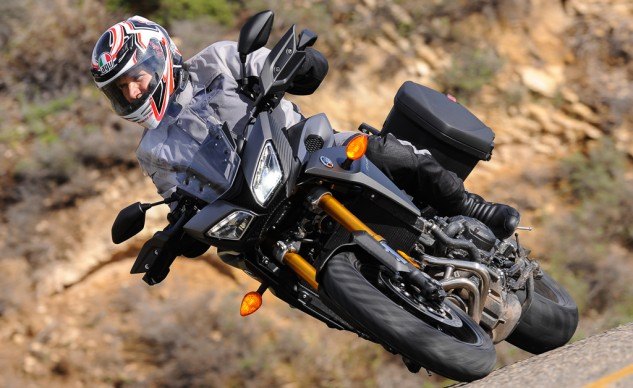
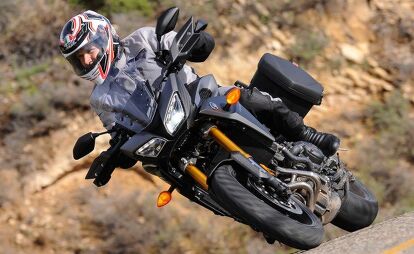









































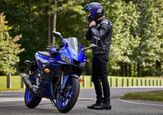
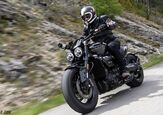
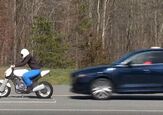
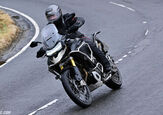
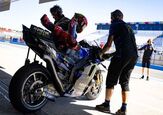
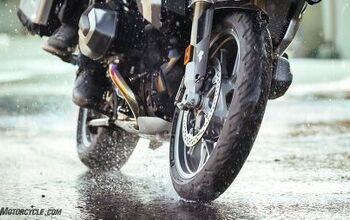
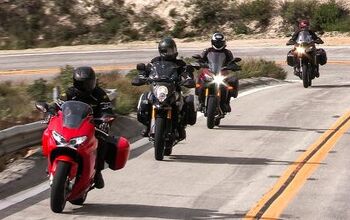
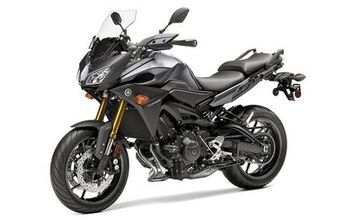
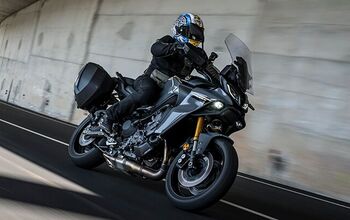
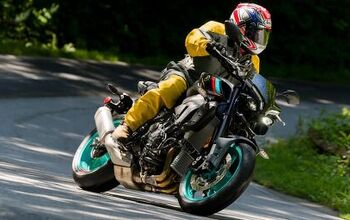
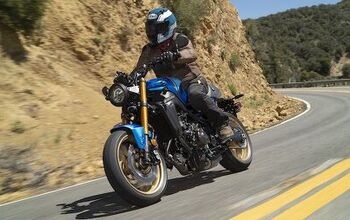

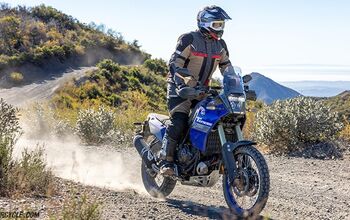
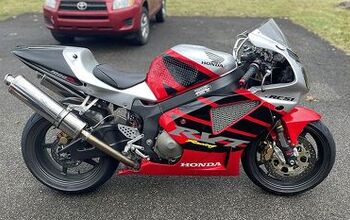
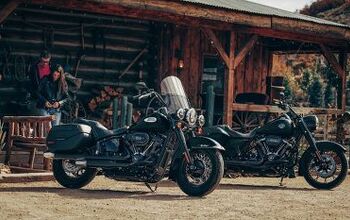
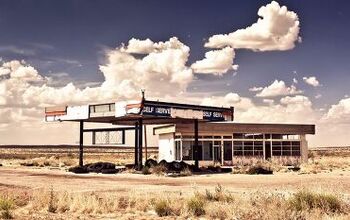
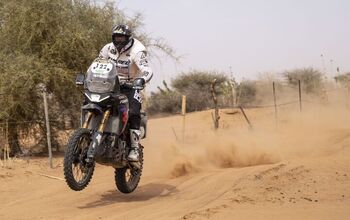

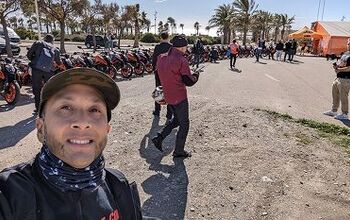
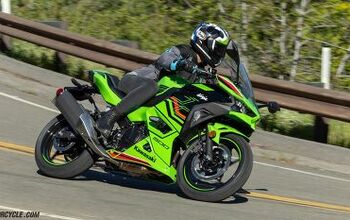
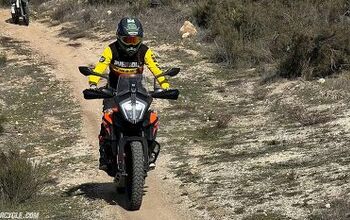
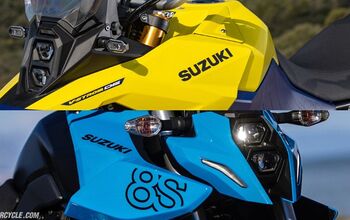
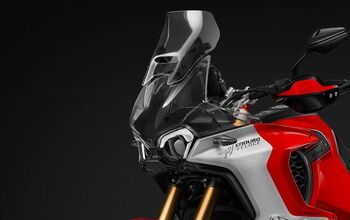
Comments
Join the conversation
Guys The FJ-09 is limited to 115mph in North America. This is a bitter disappointment as the mt-09 tracer (identical bike in Europe) does 135mph as fast as the FZ. They say the throttle was remapped to smooth out the snatchy throttle. They don't say they reduced the top speed by 20%
I rode my FJ-09 448 miles last weekend, Every thing works great!